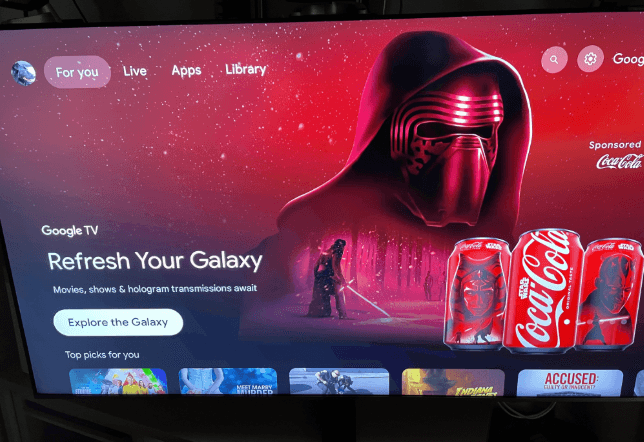
Google is expanding its Material 3 Expressive design ethos in the Google TV platform, with the goal of making the operation system feel more personalised, fluid and visually appealing, but not everyone is happy about the changes.
While some users appreciate the cleaner, more colourful and aesthetically pleasing look, there have been rising complaints that Google is taking advantage of the updates to insert even more ads onto the platform.
Android Police reported this week that Google is rolling out an update, called Google TV version 4.39.3356.780959673.5, making some changes to key parts of the user interface.
Many of the updates are pretty subtle, to be fair. For instance, there’s a slightly bigger banner area at the top of each TV show/movie detail page, and the titles of those movies and shows have been moved, so they’re more centrally-aligned than before. The buttons have been made ‘flatter’, too, with fewer rounded shapes. In addition, the image previews have somewhat smoother edges.
Whether that’s an improvement is likely down to each user’s personal tastes, but they do at least seem to give Google TV a more consistent feel across the various menu pages, and they also make it seem more “fresh”, for want of a better word.
That said, there are some negative aspects that have come to light with the evolving Google TV platform, and they have been raised in various Reddit threads by somewhat irate users. For instance, on the r/Android TV subreddit, some users have complained that they’re now seeing much bigger advertisements on the For You page, featuring products for brands like Coca-Cola. Given that r/Android TV is also a popular forum for discussing the best way to counter Google’s anti-ad-blocking drive, it’s no surprise that most posters on that tread have responded negatively to the bigger ads.

Of course, it’s not only Google that is pushing ads more frequently and numerously across its TV platform. But unlike platforms such as Roku, where the ads are generally confined to just sponsored TV shows and movies, Google seems to be increasingly pushing unrelated products and services at users, which means its ads are much more noticeable as “ads”.
That said, Google TV is based on the Android TV operating system, which is open-source and therefore gives users some options for hiding those ads. By using a third-party launcher such as Projectivy, it’s possible to mask the vast majority of ads pushed by Google. That’s not something that can be done on rival OSs, such as Roku, LG’s webOS and Samsung’s Tizen.